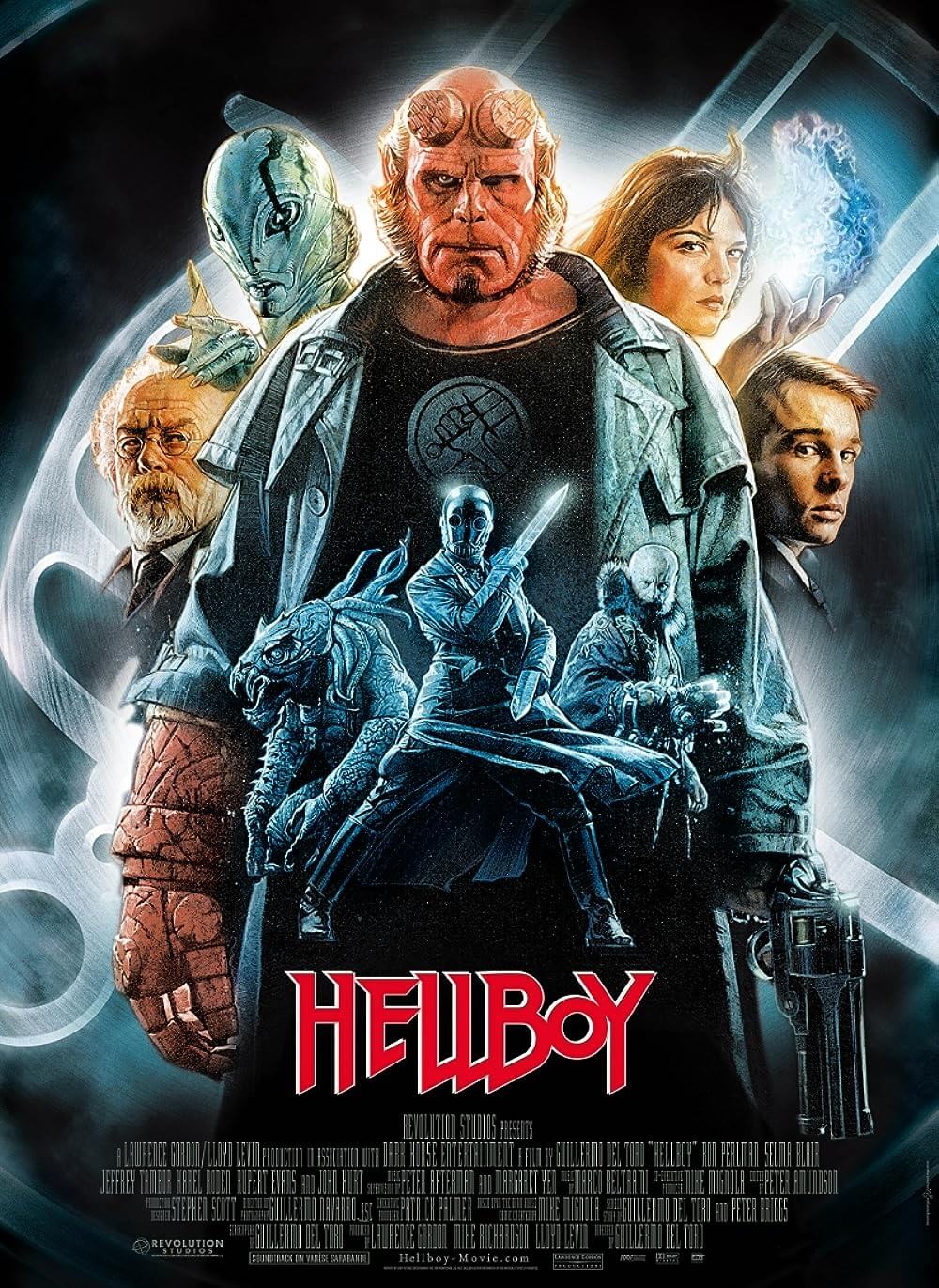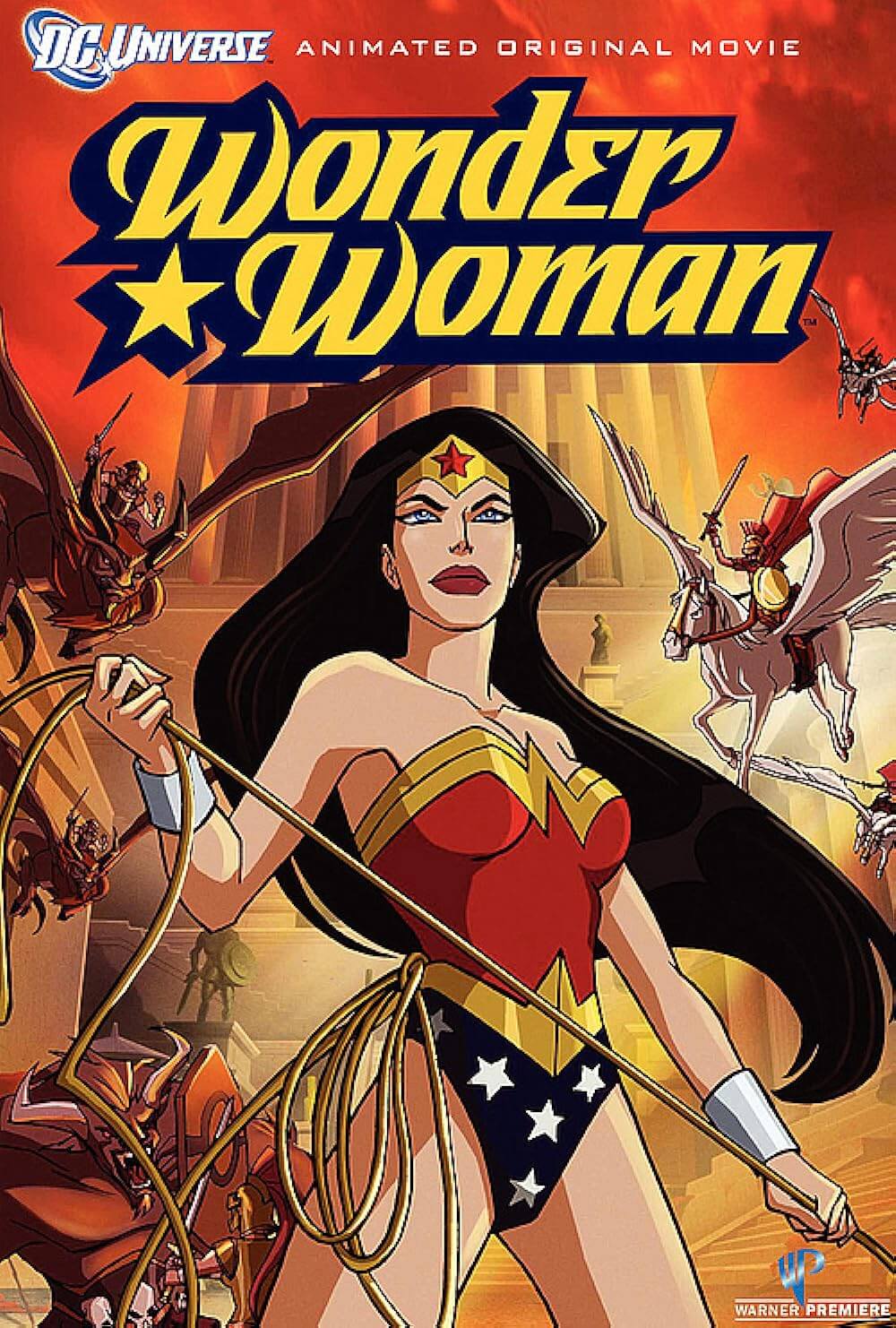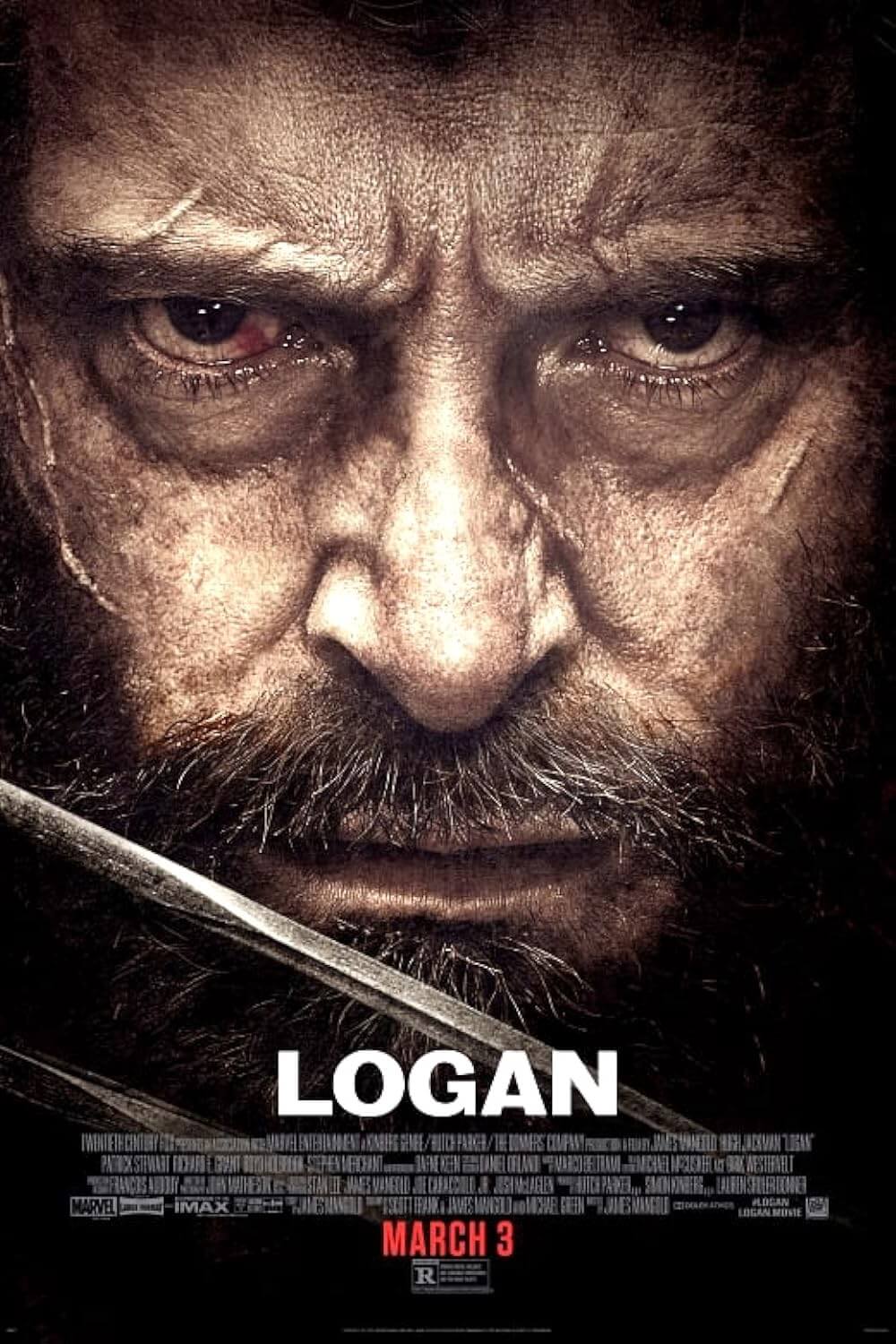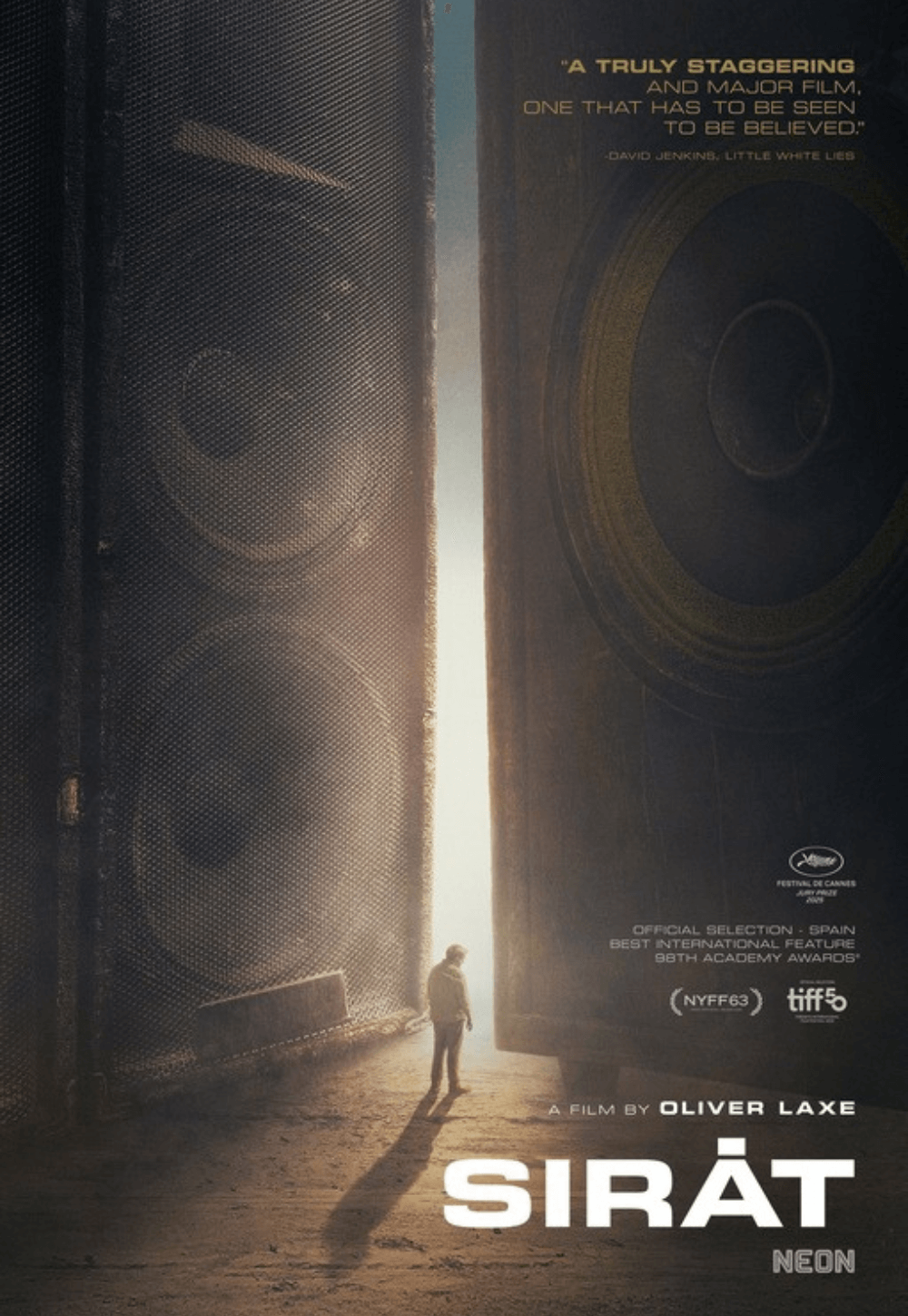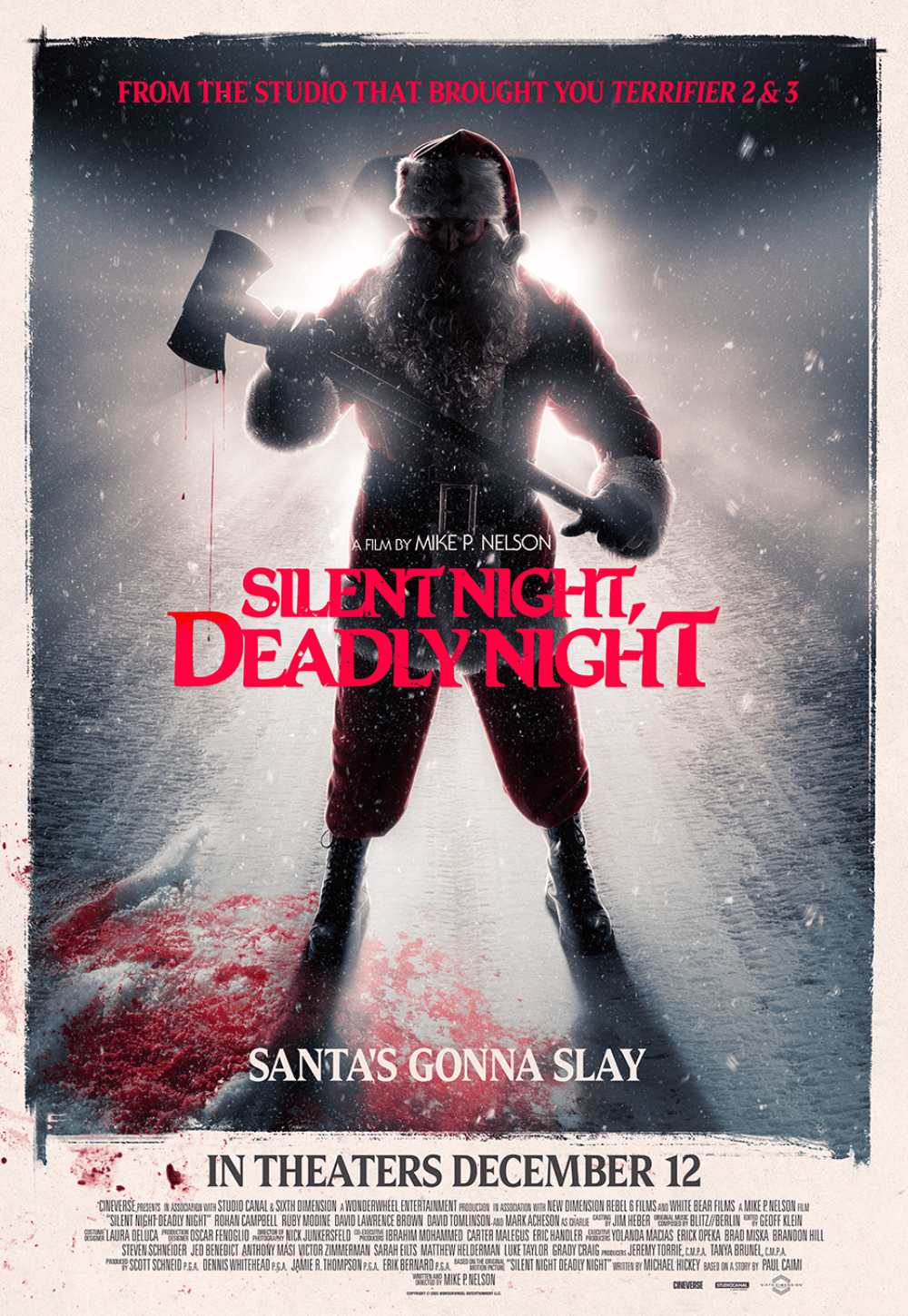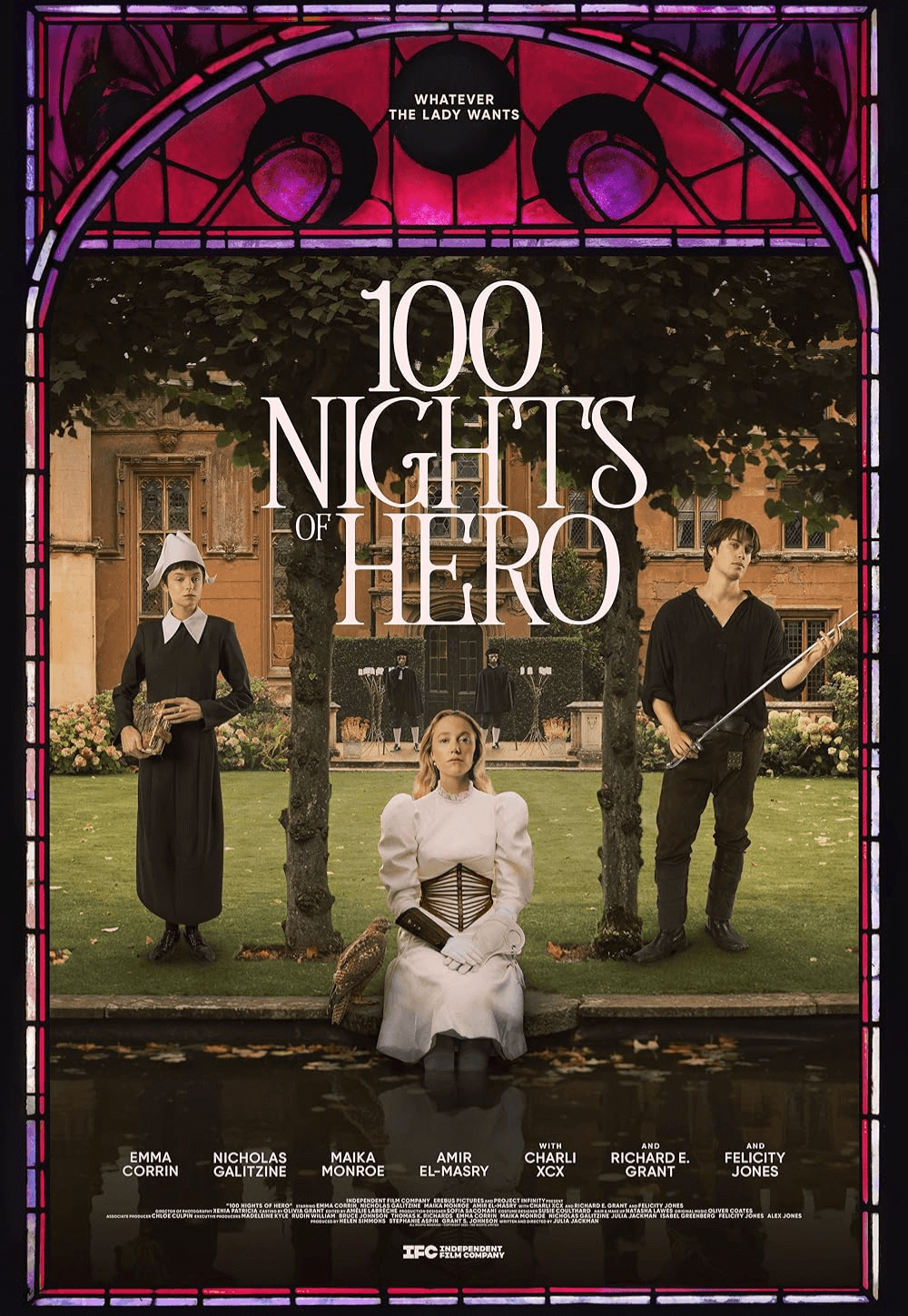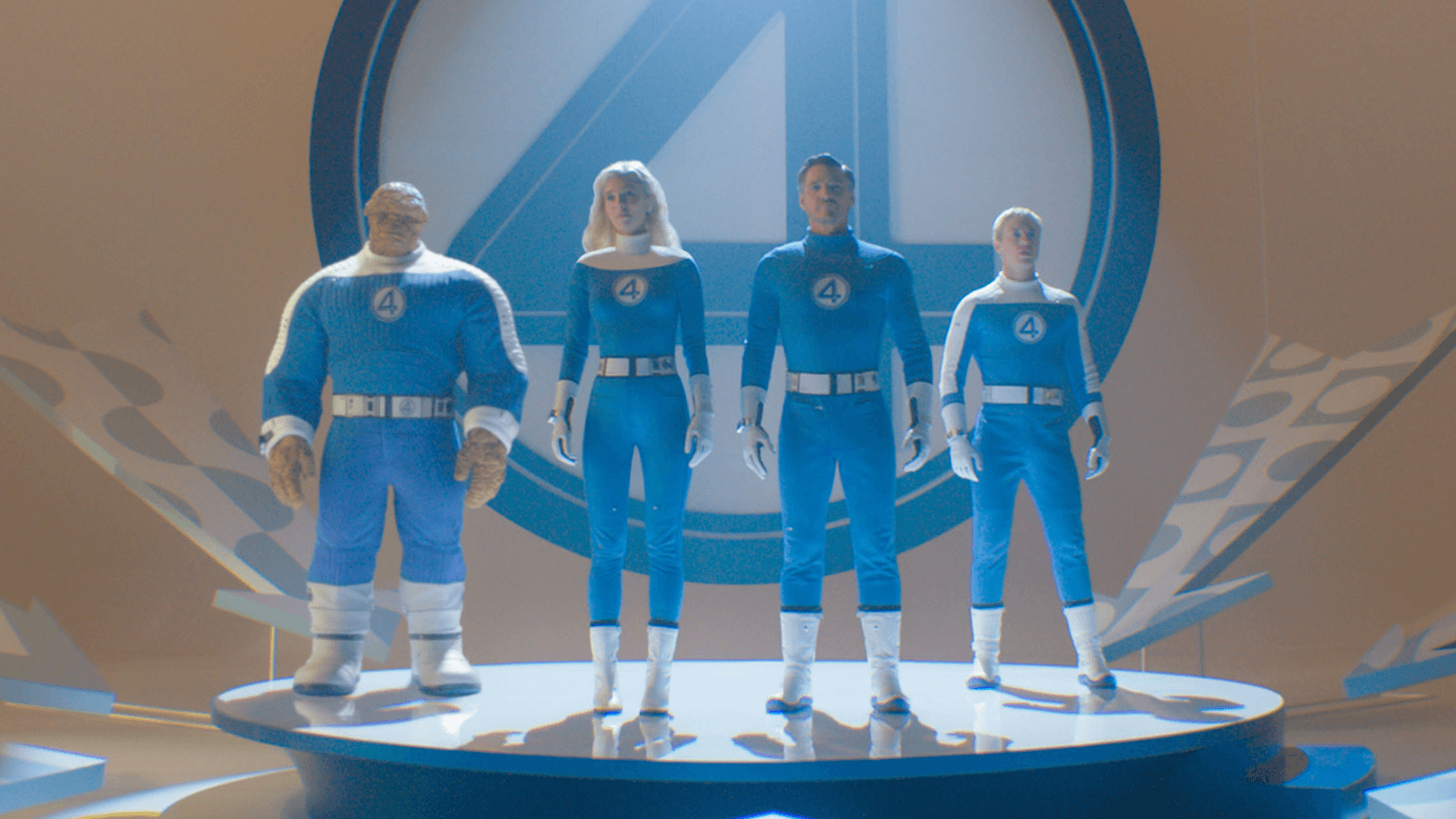
The Fantastic Four: First Steps
By Brian Eggert |
The Fantastic Four: First Steps comes as close to greatness as MCU movies get. Accented by a dazzling retro-futurist style and strong characters played by a pitch-perfect cast, it adheres to the save-the-world formula found in many superhero movies: Planet Earth faces an impossible threat from outer space, and only the titular heroes can save us. However, instead of the flat digital environments and lack of distinct visual flair found in most movies of this ilk, there’s a wonderful alternate reality for audiences to explore, set in a version of the 1960s replete with spaceships, robots, and flying cars. The movie instills an instant desire to investigate this familiar yet unique world, something most MCU movies cannot claim. Rather than feeling like The Fantastic Four is more of the same, it feels alive and new—an inspired variation on a theme that, admittedly, has already been tackled onscreen but to subpar effect. With a terrific cast who embody their iconic characters and a visual energy that presents a refreshing alternative to the Marvel house style, The Fantastic Four is not only immediately engaging but also one of the MCU’s most satisfying offerings yet.
And it’s about time. For thirty years, Hollywood has been trying to make a worthwhile Fantastic Four movie. Producer Roger Corman’s unreleased 1994 version was more of a legal strategy than an earnest release, with its unbelievably bad outcome fated to circulate on bootleg VHS tapes and DVDs before finally hitting the internet. The two features directed by Tim Story and released by 20th Century Fox—Fantastic Four (2005) and Fantastic Four: Rise of the Silver Surfer (2007)—share the plasticity of most early 2000s-era superhero fare, characterized by generic dialogue, clunky storytelling, and shoddy effects. Director Josh Trank imploded while trying to reboot the franchise with 2015’s Fantastic Four, under the misguided belief that, following The Dark Knight (2008), darker equates to better. None of them did the Fantastic Four justice. The best, unofficial adaptation is Pixar’s The Incredibles (2004) and its 2018 sequel. Unfamiliar moviegoers will undoubtedly accuse The Fantastic Four of stealing from Brad Bird’s two features, not realizing that he drew inspiration from Marvel first.
Perhaps it’s because Hollywood has tried and failed to bring these characters to life so many times that the MCU’s version feels so satisfying. It’s not only that long-overdue sense of relief that they got it right; it’s also a genuinely involving superhero movie. A couple of weeks ago, James Gunn’s Superman reboot tossed viewers into the comic-booky deep end, resulting in one of the best movies of its kind in years. The Fantastic Four does much the same, rushing headlong into the proceedings with a clarity of character, narrative thrust, tone, and vision that knows precisely what it is. Like Gunn, director Matt Shakman and his writing team resist serving another appetizer origin story and get straight to the main course. The story opens on Earth-828, an alternate reality where, sometime in the mid-twentieth century, a family of scientists ventured into space and returned with superpowers. Since then, they’ve become international heroes and role models: The stretchy Reed Richards (Pedro Pascal) and the light-refracting Sue Storm (Vanessa Kirby) present a quintessential American couple. Sue’s younger brother Johnny (Joseph Quinn) can burst into flames and fly, and Reed’s best friend Ben Grimm (Ebon Moss-Bachrach) is composed of rock and has super-strength.
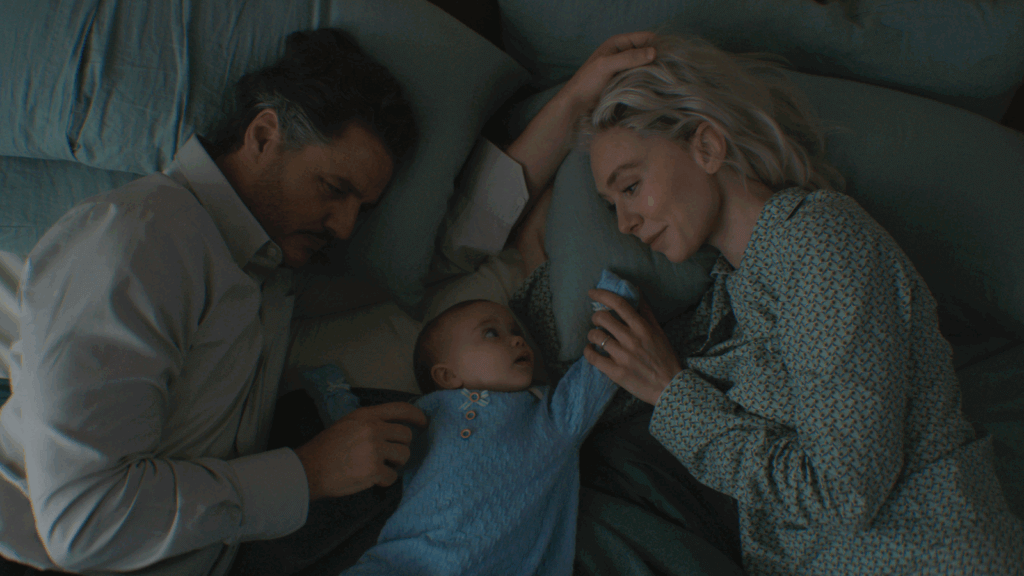
The movie has more fun exploring personalities than dwelling on powers, and that’s a pleasant surprise. Our heroes have led public lives for the last four years, and Reed continues to feel responsible for his miscalculation that landed them in the path of cosmic rays. As the smartest man on the planet, Reed is not a muscle-bound hero; he’s brainy and composed, hosting a televised Bill Nye-esque program called Fantastic Science with Mr. Fantastic. Sue, who has just discovered she’s pregnant, is a diplomat, having launched the planet-wide Future Foundation that sees world leaders working together for the common good. Johnny is a hotshot and ladies’ man, but he’s trying to prove his knack for science. And Ben is a consummate neighborhood New Yorker, even though he’s self-conscious about his appearance—though, I wanted a little more from his almost-romantic subplot with a local schoolteacher (Natasha Lyonne). A world invested in science? Countries from around the globe that work together? This is indeed a fantasy, but what a delightful escape.
The plot kicks into gear with the arrival of a silver surfer known as Shalla-Bal (Julia Garner), who heralds the world-devouring entity Galactus (Ralph Ineson). She travels the universe in search of life-rich planets for her master to break down with his enormous ship and consume. Determined to save Earth from such a fate, the Fantastic Four tracks the surfer into deep space (they have a spaceship, obviously) to confront Galactus and negotiate. He presents them with a deal: He offers to spare Earth in exchange for their unborn child, who possesses “infinite power” and could finally end the billion-year-old being’s hunger. There’s no question that the Fantastic Four will reject the deal, protect the child, and find another way to save the planet. After a journey back to Earth—and a zero-gravity labor sequence, conveniently omitting bodily fluids for general audiences—the team faces angry mobs who demand they sacrifice the child. After my screening, I didn’t hear viewers discussing the VFX or characters; instead, I heard them debating Galactus’ proposal and even criticizing Sue for not handing over the baby immediately. Maybe today’s moviegoers see the logic in sacrificing children to appease the gods. I was reminded of Mrs. Carmody from The Mist (2007), with her demands for “Expiation!” and eagerness for child sacrifice. Personally, I prefer Reed’s choice to find a more inventive solution that requires no loss of life.
Setting that aside, the film is a miracle of production design. Kudos to Kasra Farahani for delivering a film that appears to have been assembled with Disneyland’s futuristic Tomorrowland in mind, complete with familiar retro clothing and hairstyles, along with technology that evokes wonder and imagination. Comparisons to The Jetsons are inevitable; there’s even a cute family robot—H.E.R.B.I.E., who looks and sounds like WALL•E and serves as a cook, co-pilot, wet nurse, and whatever else the team needs. Shakman and his editors zap the movie with an infectious energy and momentum, keeping the production mercifully under two hours and propelled by nimble cutting. It’s an antidote to dull, bloated blockbusters. The Fantastic Four doesn’t stop to indulge in unnecessary subplots or belabor images, though there are a few stunners of Galactus and Shalla-Bal. Instead, Shakman employs charming 1960s-style split-screen montages and faux archival footage that resembles the early astronauts preparing for spaceflight in the documentary Apollo 11 (2019).
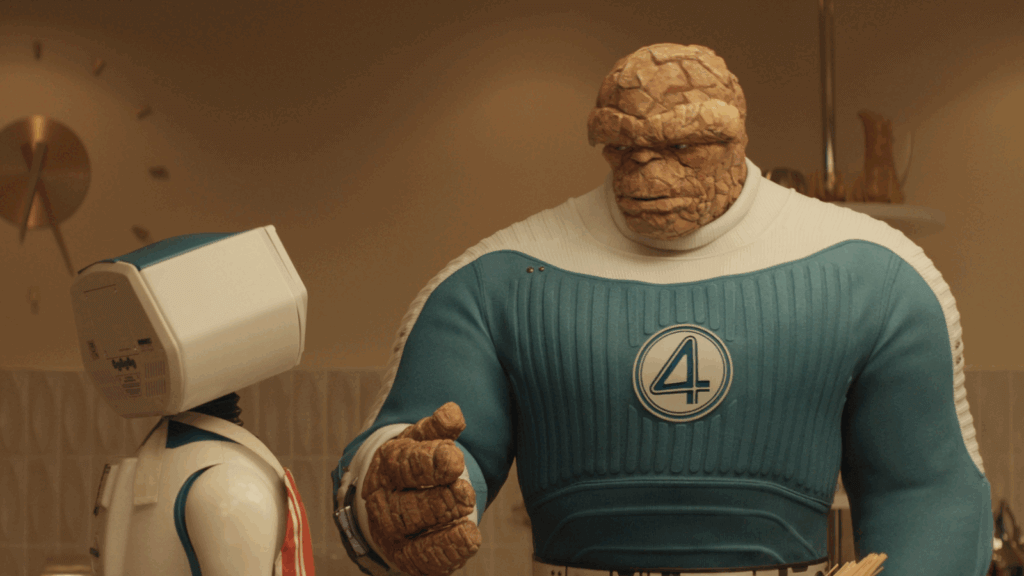
The missteps are limited to a few instances of inferior CGI, leaving the characters and story to take precedence. Effects artists still haven’t figured out how to render Johnny Storm’s flames convincingly. Some of the baby scenes appear janky (Because who has time to make an infant actor do what the story needs them to?), especially when Ben holds the child. However, for every instance of flimsy CGI, every other aspect of this world proves immersive, from the alternate Earth’s details to the towering celestial being. I also loved the few scenes with the grandiose Mole Man (Paul Walter Hauser), the leader of Subterranea, an underground world that later provides a way for the filmmakers to destroy a city without a catastrophic death toll. And while The Fantastic Four is mostly a pleasure to look at, the visuals recede next to the chummy jibes between Johnny and Ben, or the dynamic between Reed and Sue over his capacity for brutal scientific logic.
Shakman hails from directing television—It’s Always Sunny in Philadelphia and WandaVision, with the latter boasting a similar retro-futurist vibe—and he knows the importance of strong characters. That’s also what made this year’s Thunderbolts* such a pleasant surprise. A lesser filmmaker, script, or cast may have resulted in The Fantastic Four getting overwhelmed by its excellent production design and save-the-day spectacle. Shakman and company achieve a balance between the material and how they present it. After so many recent MCU titles that couldn’t quite find a harmony between form and content, mainly because Marvel’s non-style has become the standard, The Fantastic Four’s drive and distinctiveness are refreshing. But it’s more than just an improvement on the post-Avengers: Endgame (2019) run of MCU features and TV shows; it’s a long-awaited take on some of Marvel’s most enduring characters, and it’s done right. As a critic and a fan, it was a pleasure to see the movie do something different than most of its contemporaries, and also do it so well.
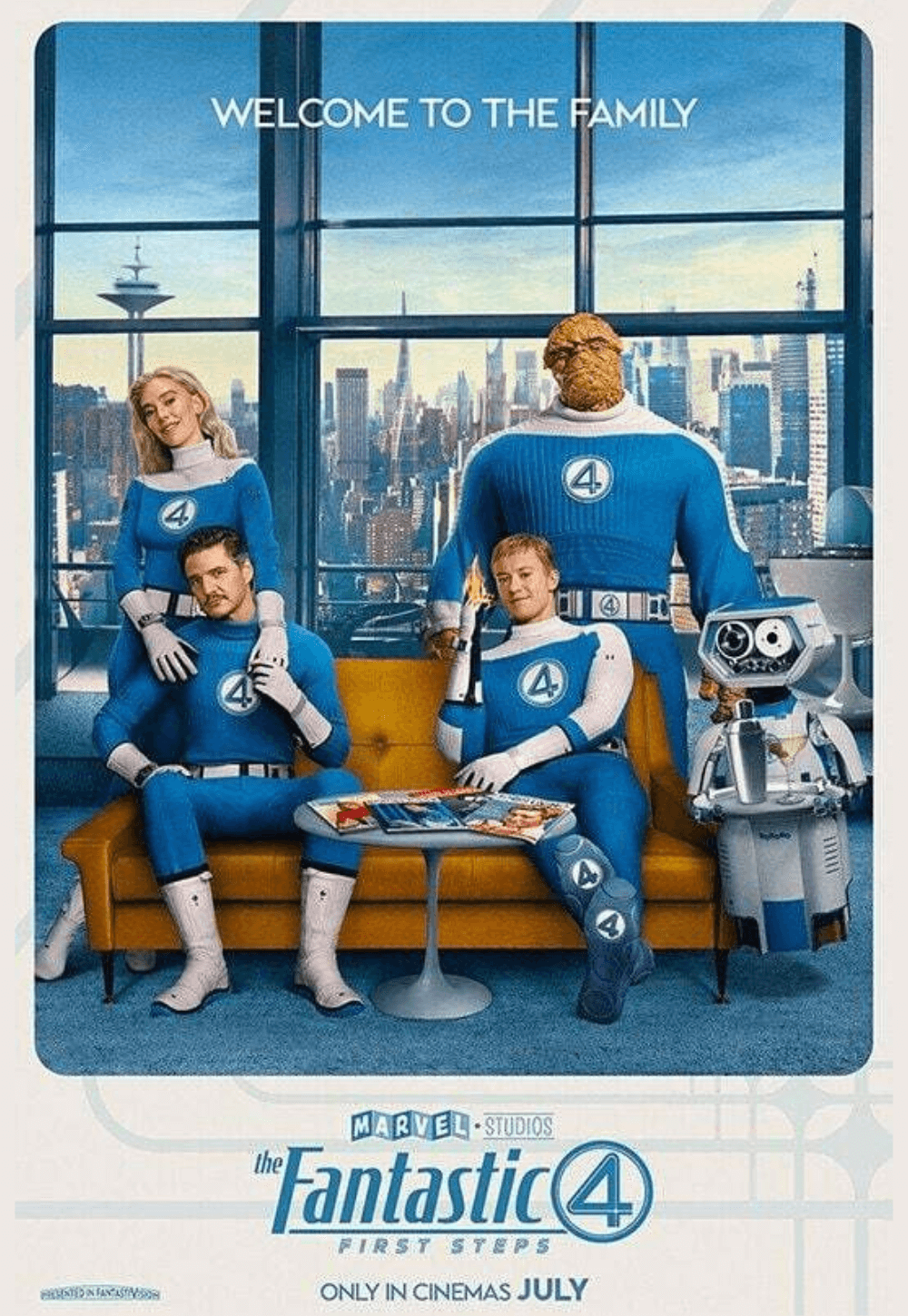
Thank You for Supporting Independent Film Criticism
Thank you for visiting Deep Focus Review. If the work on DFR has added something meaningful to your movie watching—whether it’s context, insight, or an introduction to a new movie—please consider supporting it. Your contribution helps keep this site running independently.
There are many ways to help: a one-time donation, joining DFR’s Patreon for access to exclusive writing, or showing your support in other ways. However you choose to support the site, please know that it’s appreciated.
Thank you for reading, and for making this work possible.
Brian Eggert | Critic, Founder
Deep Focus Review


